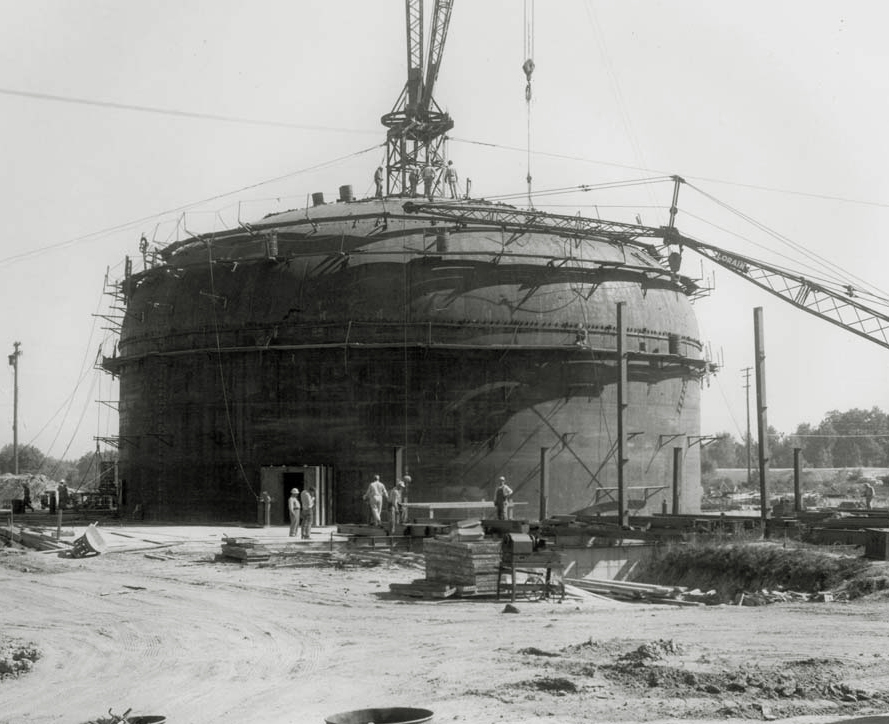
Construction of the Plum Brook Reactor Facility
The containment vessel for the National Advisory Committee for Aeronautics’ (NACA) new test reactor being built at Plum Brook Station approximately 60 miles west of the Lewis Flight Propulsion Laboratory. NACA Lewis had been interested in the use of nuclear power for aircraft propulsion since the mid-1940s. Their researchers concentrated their efforts on the study of high temperature materials and heat transfer issues. A Nuclear Division was established at Lewis in the early 1950s. The division’s request for a $4.5 million 60-megawatt test reactor was approved in 1955, and 500 acres of the army’s 9000-acre Plum Brook Ordnance Works were selected for the facility. Many of the NACA engineers who designed the Plum Brook Reactor had no previous experience with nuclear facilities. The engineers developed an in-house nuclear school to educate themselves and made frequent visits to reactors at Oak Ridge, Idaho Falls, and other sites. The steel containment vessel, which was more than 100 feet high (55 feet above grade and 56 feet below grade), surrounded the reactor tank area, the cooling quadrants, and canals. The containment vessel was designed to prevent any radioactivity from being released if an accident were to occur in the reactor. This safety precaution was essential due to the proximity of nearby communities. NACA Lewis had to prepare a Final Hazards Summary report before construction could begin. The document detailed all possible problems or catastrophes and the precautions taken to prevent them. The analysis dealt with accidents that could result from the failure or malfunction of component parts of the reactor, its experiments, the cooling, electrical, or control systems; or the effect of earthquakes, sabotage, or negligence. The reactor went critical for the first time in 1961 and began operating at its full power levels in 1963.
- X


























